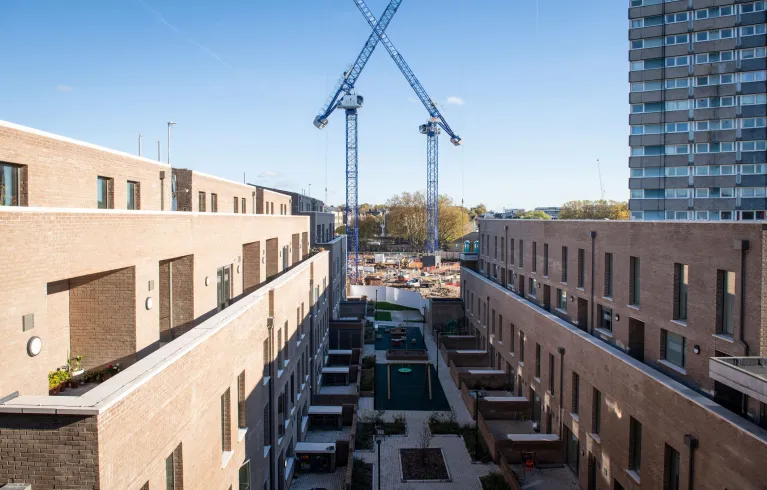
Key information
Publication type: Current investigation
Publication date:
Print this page
Contents
5 sections
Introduction
The London Assembly Planning and Regeneration Committee is investigating mid-rise development and the London Plan.
Investigation aims and objectives (Terms of Reference)
This investigation will consider what role mid-rise residential development could play in meeting London's housing need, and how the next London Plan could support it. It will examine:
- The case for mid-rise development in London
- The challenges and barriers to developing mid-rise residential buildings in London
- The Mayor’s housebuilding targets for London and how mid-rise fits with this
- What policies the next London plan could include on mid-rise and density
Key issues
- London is less densely populated than many other comparable global cities and is characterised by a higher proportion of low-rise housing. In 2021, 88.3 per cent of London’s homes were in low-rise buildings (houses, bungalows, or flats in two- to five-storey buildings). By comparison, only 41 per cent of Paris’s homes, 48 per cent of New York’s, and 62 per cent of Tokyo’s were in low-rise (≤4 storeys) buildings.
- The Government has set the Mayor a target of 88,000 homes per year over the next decade. In the financial year 2023-2024, 32,160 new homes were built, and in the past 20 years annual completions have never exceeded 52,200.
- The current London Plan does not include a policy on mid-rise. A new London Plan is due in 2027, and in 2025 the GLA launched its consultation Towards a New London Plan. In his foreword, the Mayor stated: “given the scale of the challenge we now face and our bold plans for growth, the next London Plan will need to go further.”
Key questions
- Should London build more mid-rise housing. Why?
- How could mid-rise housing contribute to meeting London’s housing needs?
- What do Londoners think about mid-rise residential buildings (as opposed to alternatives)?
- Should low-rise areas extend upwards into mid-rise, and how feasible is this?
- How does London’s rate of mid-rise housing construction compare to other cities, and what factors contribute to any differences?
- What role should the GLA, and the new London Plan play in supporting mid-rise housing development?
Call for evidence
As part of its investigation, the Committee issued a call for evidence.
Back to table of contents